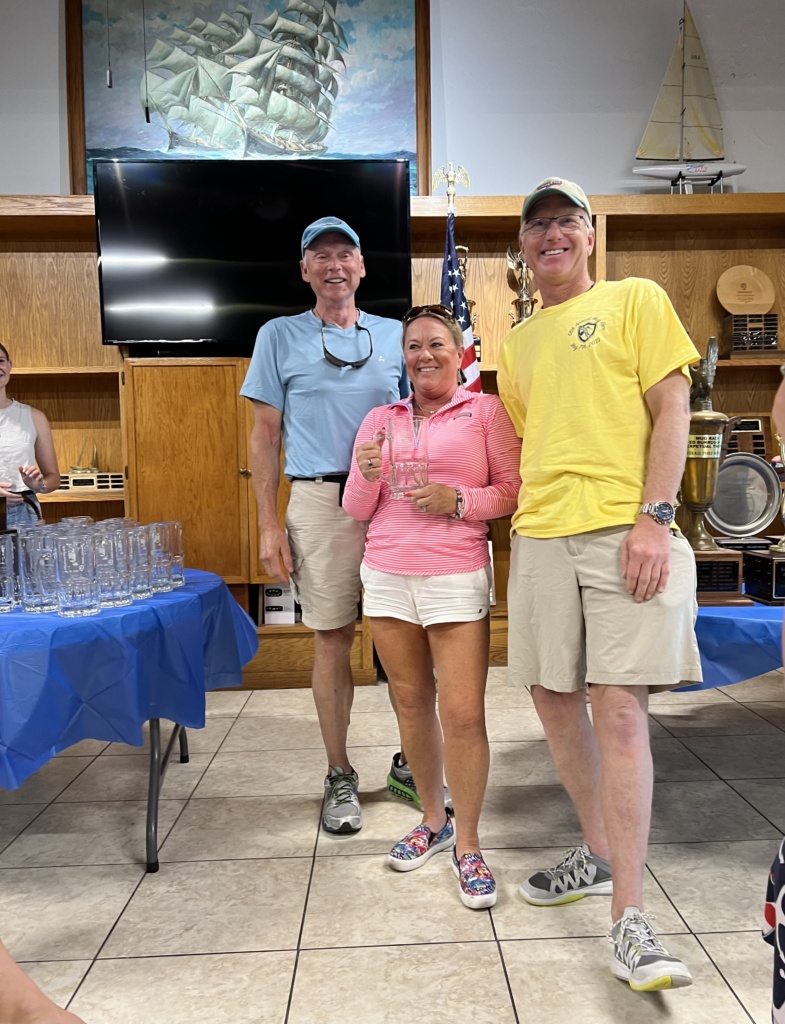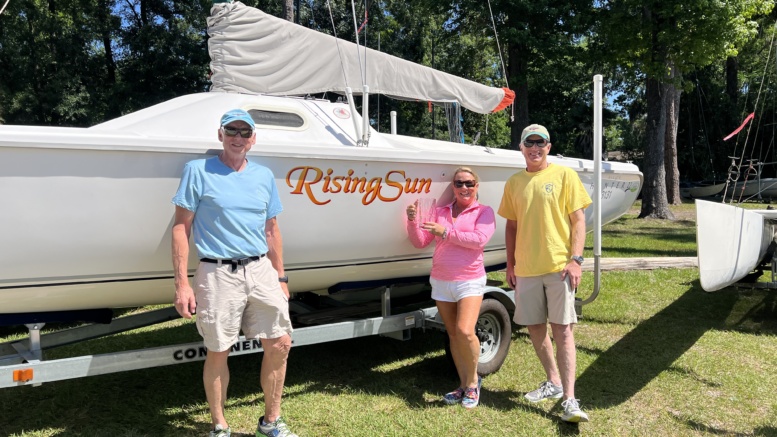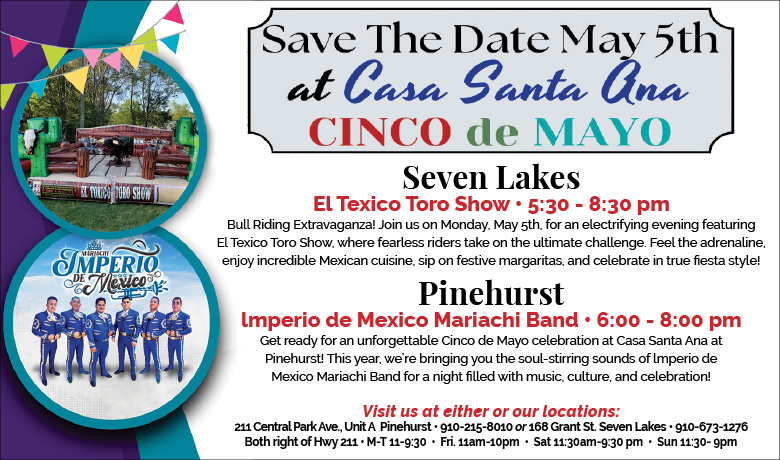BY MAGGIE BEAMGUARD, Insider Editor
One sailing class on Lake Auman years ago put the wind in Yvonne Short’s sails. That class would one day carry her and her crew, including husband Steve and their friend Patrick Dorsch of Dylan, Colorado, across the finish line of the “World’s Longest River Race“ — in first place in the Cruiser/Spinnaker Class — for the second time.
The Shorts, who started sailing competitively about a decade ago, have participated in countless races through the years. But the challenge presented by the Mug Race, a 38-mile voyage north, up the St. Johns River from Palatka to Jacksonville, Florida, was particularly satisfying.
They first raced the Mug and won their class in 2019, but it was another two years, due to COVID-19 and recovery from a personal injury, before their second entry on May 7.
Sailing friends from Sanford, Florida first encouraged them to try the popular race.
“We put it off for a few years, and then one year, we decided ‘We’re going to do this,’” said Yyvonne. “And all we wanted to do was finish. And we won!”
The Shorts secured this year’s Cruiser/Spinnaker Class First Place trophy in the RisingSun, their 2014 Hunter 22, with a finish of six hours, 17 minutes and 48 seconds.
The Mug race is divided between catamarans and monohulls. The Shorts were not racing against the inherently faster catamarans, which always win the overall prize.
Yyvonne typically takes the helm. Because of the length of this race, she switched off with Dorsch. Steve takes the front of the boat with the spinnaker, a forward lightweight sail intended for certain wind angles and speeds. These are the colorful sails often seen on sailboats.
A third crew member is a helpful extra set of hands when flying a spinnaker. “That sail is not permanently attached to the boat. So it takes two people to launch it so that it goes out with all the lines,” said Yvonne. “And somebody’s got the lines, and somebody’s putting the sail up until it catches the wind. And then it’s sort of like flying a kite.”
This year, they did not get to kite-fly for very long. They faced winds between 15-25 knots with gusts into the upper 30s.
“When it’s just the two of us, our rule of thumb is that you don’t want the wind to be higher than the length of your boat. It’s just for safety,” said Yvonne. “If we can grab a third person, then you’ve got more counterbalanced weight and you’re better off.”
The conditions were challenging.
“It wasn’t screaming like that when we started. Early on it was in the 15 to 20 knot range, and with three people onboard, we were good,” said Yvonne. “And the wind was coming from the south west, which put the wind off the stern quarter. And we were able to put up the spinnaker.”
But it would only stay up for about an hour.
“The wind gods decided to play a trick on everybody,” she said. “The forecast did not include any of this, but the winds shifted off to the northwest. And that meant we were taking the wind on the bow of the boat. And you were watching everybody taking their spinnakers down all at the same time.”
Eighty boats started and 27 did not finish, capsizing in the high wind and rough water. “You only have one place to stop, and that’s the finish line,” said Yvonne. “The river is about three miles wide, and there are some homes along the way, but there’s literally nowhere to go. They did have safety boats all along the way so if anyone got in trouble people weren’t floundering out there. And the Coast Guard was available.
“We had a good time. Sailing is very mentally challenging, and it’s very physically challenging. And it’s fun, and it’s an adrenaline rush. But we were all very happy to make it to the finish line this year.”

It is a challenge they enjoy tackling as a couple and a good race doesn’t necessarily mean a win.
“You’re concentrating on the water and where the wind is coming from. And you really don’t look so much at who you’re sailing against. Basically you’re sailing against the wind and the water and the clock,” said Steve Short. “Everybody has to sail their own race, and at the end of the day the result is the result. You can not win a race, but the time you spend racing can be very satisfying. It can be a very intellectually and technically solid race.”
Each time they race, the Shorts learn a little something. Steve says there are some boat modifications coming following this race that will make it easier to stay on the rail to trim the sail when the boat is healed way up high.
The Shorts study sailing and have participated in some webinars with former America’s Cup sailors. They also work with a sailing coach located in South Carolina who is available for hands-on instruction or to answer any race questions.
The Shorts, who split their time between homes in Cary and Seven Lakes West, can be found practicing on Lake Auman two or three days a week or more during the summer if the weather is good.
“Sometimes our decision of which house to be at is based on the wind,” said Yyvonne. “We plan everything around the weather so that we can sail as much as we possibly can.” They also take advantage of the mild sandhills winters, keeping the boat at the house to take advantage of those warmer winter days.
“When we go out sailing here, we play like we practice. We don’t just go out and float around,” said Steve, “So when we come to a race, our muscle memory kicks in and we relapse back to how we practiced. We work on techniques and we see how fast we can sail to marks and how smooth and technical we can be.”
The couple comprises their own built-in crew. And while sometimes there are contrary opinions that are shared, they enjoy the pursuit of sailing together. Both would love to see more people enjoying the sport.
“I think people would be surprised how much fun it is,”said Steve.
After a big sailing trip like the Mug Race, Yvonne and Steve take one or two weeks to rest and recover. But it’s never long before they are back on the water getting ready for the next one.
Contact Maggie Beamguard at maggie@thepilot.com







